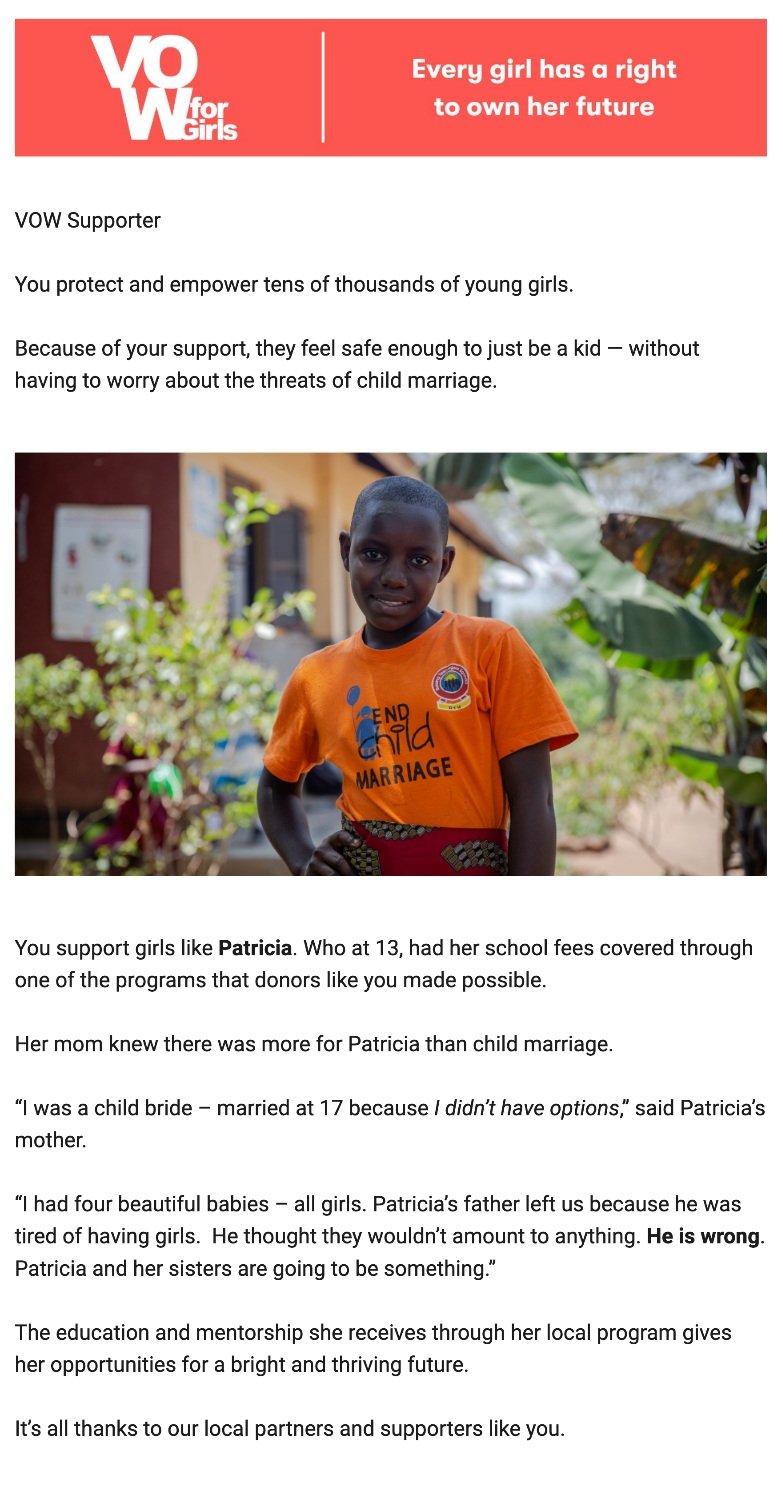5 Tips to Write a Nonprofit Newsletter That Stands Out from the Rest
If you’re reading this, chances are you’ve sent out a newsletter for your nonprofit within the past six weeks. You know that email is a powerful way to connect with your audience. You want your emails to inspire your reader to take action in support of your cause.
But your supporters are likely receiving several email newsletters from other nonprofits just like yours. In a world of flooded email inboxes, how do you grab your recipient’s attention, convince them to open your email, and read what you have to say? Follow these five tips to help your email newsletter stand out from the rest.
Tip #1: Write in simple words
The worst email newsletters use too many big words. Dry and professional, they’re full of industry-specific jargon and acronyms that turn readers off. (If I could ban the word “infrastructure” from all nonprofit newsletters, I would!).
Read your email out loud. If it doesn't sound like a conversation with a friend around the dinner table, you shouldn’t send it out.
PRO TIP: Copy and paste your email text into Bloomerang’s free Donor-Centricity and Readability Tool. It will analyze your writing and tell you what grade reading level it represents. Aim for a 6-8th grade reading level.
I love this example from The Adventure Project. It’s super simple, engaging, and easy to read.
Tip #2: Tell a story
Never assume that your recipient already knows why their support is needed. Without a story, there’s no context for your cause and nor a compelling call-to-action.
Remember that your recipient’s email inbox is full of messages from other nonprofits like yours. Remind them why your work is urgent and important, and introduce them to someone that their support impacts. Show them the difference they’re making in the world. Inspire them, educate them, and make them feel something for your cause.
After all, our brains are designed to connect with the world through stories. We can’t put down a good story! A compelling tale is an excellent way for us to process information — much more powerful and memorable than statistics.
This example from Oscar’s Place Adoption Center & Sanctuary introduces the reader to one of their donkeys, telling his story from malnourishment and suffering to healing and happiness.
Tip #3: Use YOU-focused language
No one likes someone who only talks about themselves and how great they are. Beware of doing this as an organization! While you have accomplished a lot of amazing work (and it’s completely understandable why you would want to celebrate that impact), it can come across as self-centered. It can also make it look like you don’t need more support. Either way, your recipient will stop reading your email.
Turn your WE-focused language into YOU-focused language. Rather than talking about the work you did, frame it as the work your reader made possible through their support. Show them that they have a clear role in your story.
PRO TIP: Use YOU-focused words at least twice as many times as you use WE-focused words. Bloomerang’s free Donor-Centricity and Readability Tool can check for that, too!
Ignite Adaptive Sports has been around for 48 years. But that fact feels different when it’s framed around YOU, the supporter.
Tip #4: Make it clear
No one has time to read paragraphs upon paragraphs of text to sift through for what’s relevant. Make your message extremely clear, and tell your reader exactly what action you want them to take.
Use your subject line to be specific and grab your recipient’s attention. Personalize it with information that matters to them. Make your email inviting and easy to consume with short sentences, skimmable blocks of text, and compelling imagery. (Or, go for a bare-bones plain-text email for an even more personal touch).
NextAfter found that simple, stripped down, less designed emails lead to more donations through this email experiment for KUOW Public Radio.
Tip #5: Stick to 2–4 pieces of information
You likely have a lot of exciting things happening at your organization. If you send out newsletters on a monthly or quarterly basis, there’s probably a lot that you want your readers to know. But the danger of including too many updates, stories, and opportunities in your email is information overload. You run the risk of burying your most important piece of information. Your readers will get overwhelmed — and as a result, take nothing away from your email at all.
Tell just one story, and include 2 to 4 pieces of information (not 24!). Your reader will be much more likely to absorb it.
Rather than filling this email with statistics about the international child marriage crisis, VOW for Girls tells one girl’s story. As a result, it’s much easier to understand why the issue matters.
By following these tips, you’ll be well on your way to creating an engaging email newsletter that your recipients will read — and be inspired to act upon.
Need support in putting these best practices into action? We’d love to help! Learn more about email marketing services at the Purpose Collective.







